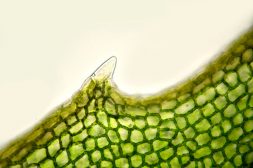Definition
noun, plural: dextrins
A carbohydrate that has a chemical formula of C18H32O16, used chiefly as a thickening agent in food or as adhesive
Supplement
Carbohydrates are one of the major classes of biomolecules. The simplest form of carbohydrates is a monosaccharide. The monosaccharides may combine by glycosidic bonds and form larger carbohydrates, such as oligosaccharides and polysaccharides. Dextrin is an example of a carbohydrate.
Dextrins are carbohydrates produced from hydrolyzing starch or glycogen. It is comprised of D-glucose units that are linked by α-(1→4) or α-(1→6) glycosidic bonds.
Dextrins are naturally-occurring. In humans, dextrin is produced during the digestion of starch. In particular, the human saliva contains the enzyme α-amylase that hydrolyzes the α-1,4 glycosidic bonds that link carbohydrate constituents of the starch. This results in the production of dextrin (as well as maltotriose and maltose).
Dextrins are produced synthetically as well for their industrial uses. Starch (or British) gum is a translucent, gummy, amorphous substance that is used as a substitute for gum. It is produced synthetically through heat, acids, or diastase. It is of somewhat variable composition, containing several carbohydrates which change easily to their respective varieties of sugar. It is so named from its rotating the plane of polarization to the right.
Linear dextrins are carbohydrates with six or more glucose molecules that are linked with α(1→4) glycosidic linkage. Limit dextrins are those comprised of glucose molecules linked with α(1→6) glycosidic linkage.
IUPAC name:
- (3R,4S,5S,6R)-2-(2R,3S,4R,5R)-4,5-dihydroxy-2-(hydroxymethyl)-6-(2R,3S,4R,5R,6S)-4,5,6-trihydroxy-2-(hydroxymethyl)oxan-3-yloxyoxan-3-yloxy-6-(hydroxymethyl)oxane-3,4,5-triol
Chemical formula:
Synonym(s):
- British gum
See also:
Related terms:
- achroodextrin
- Dextrin 6-alpha-d-glucosidase
- Dextrin 6-glucosyltransferase
- Dextrin glycosyltransferase
- Dextrin transglycosylase
- erythrodextrin
- Iron dextrin
- Limit dextrin







